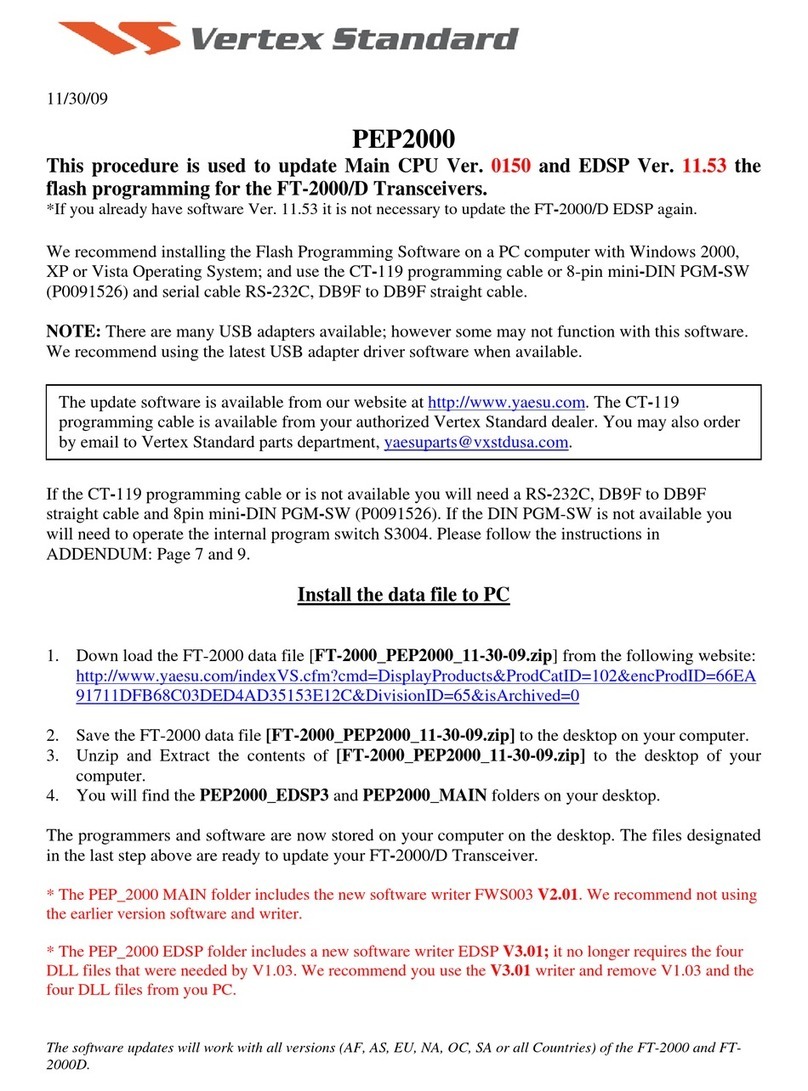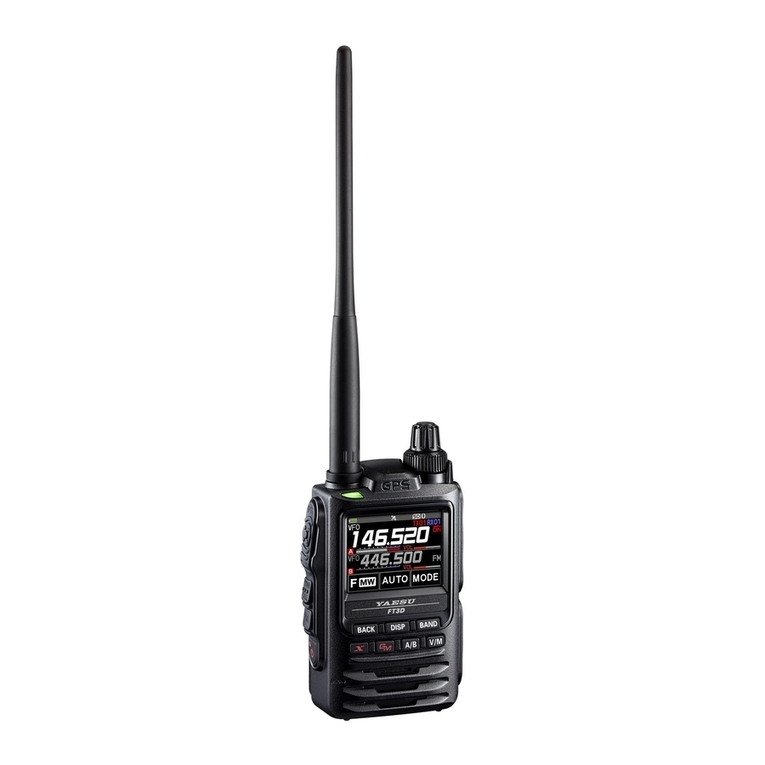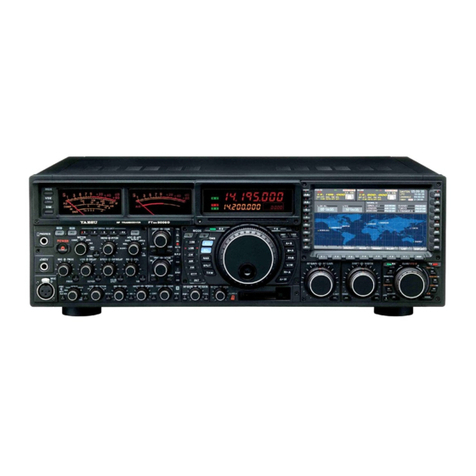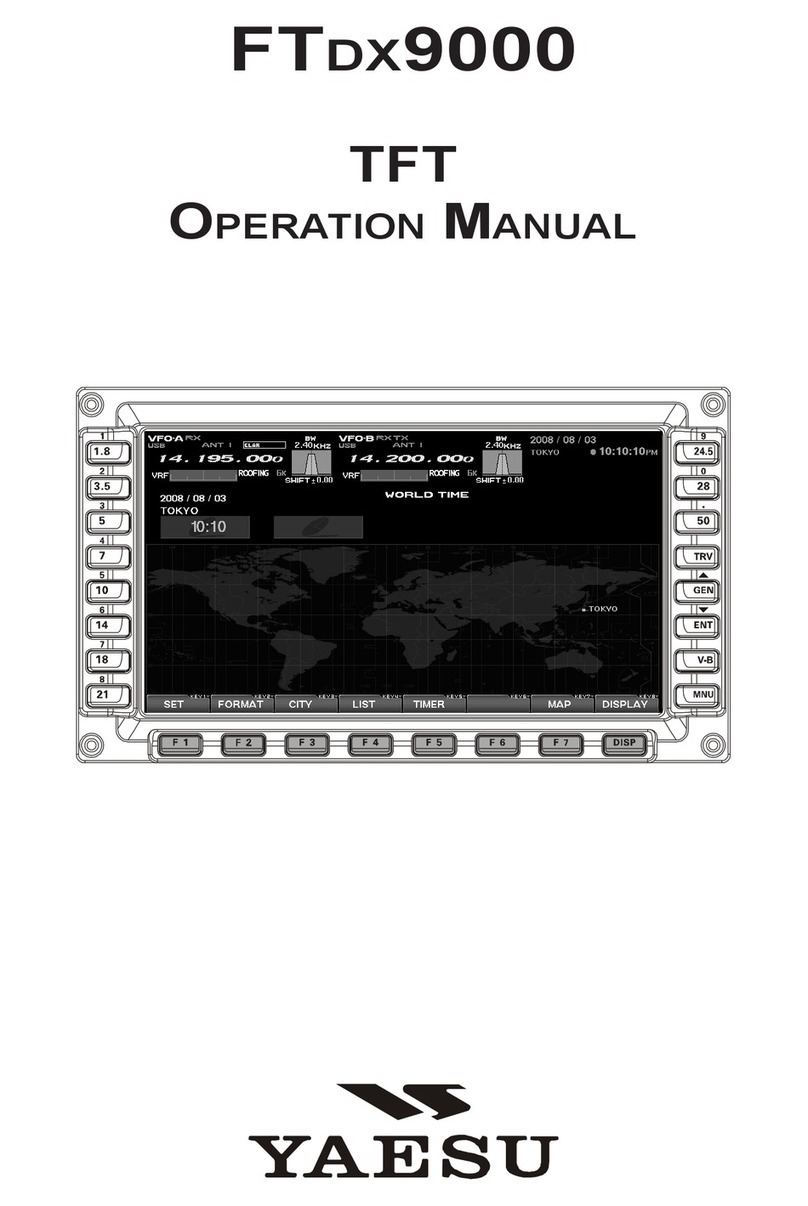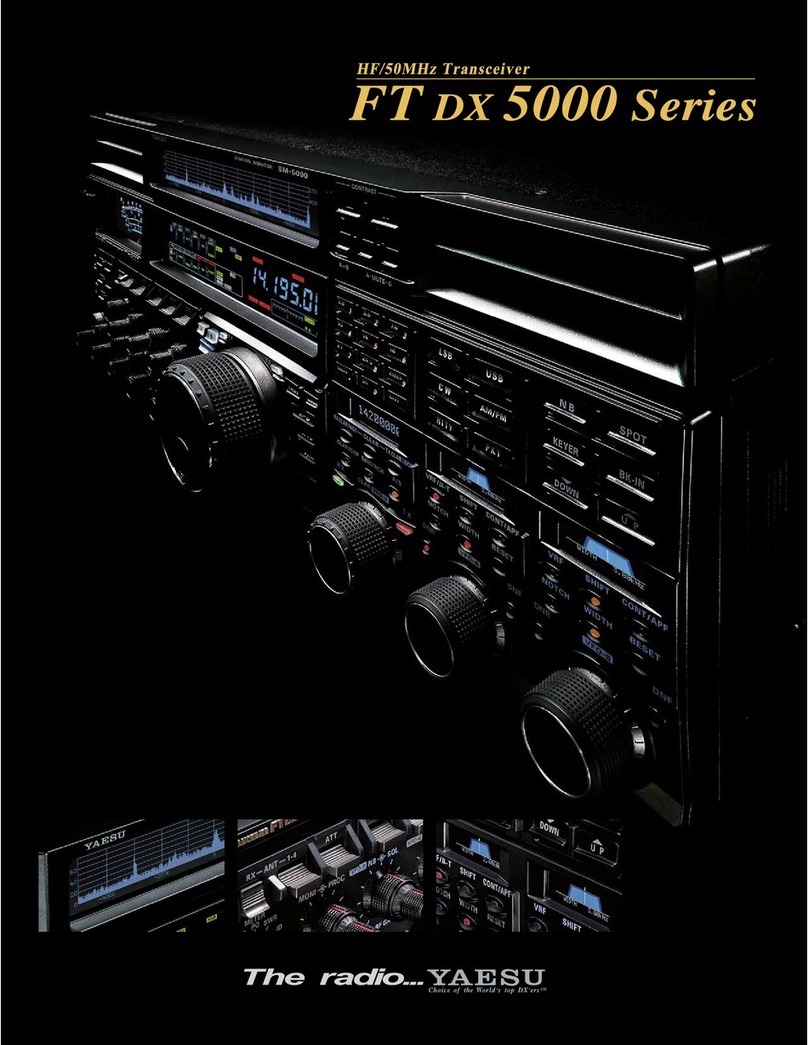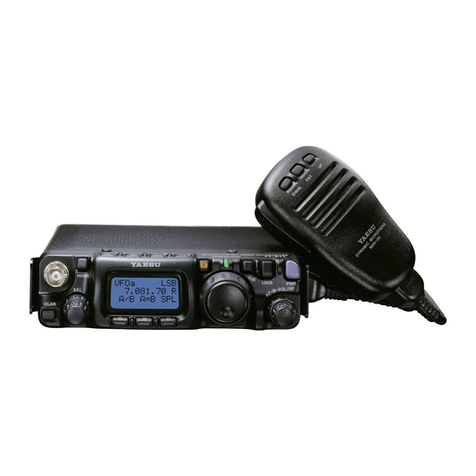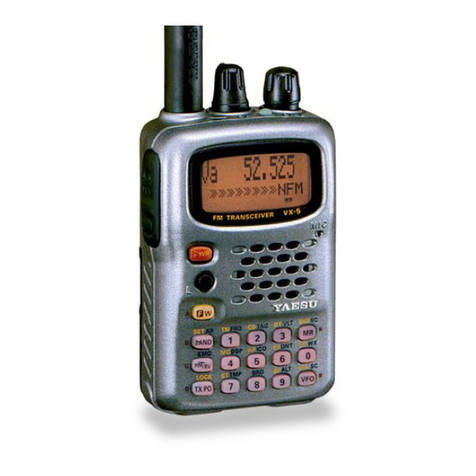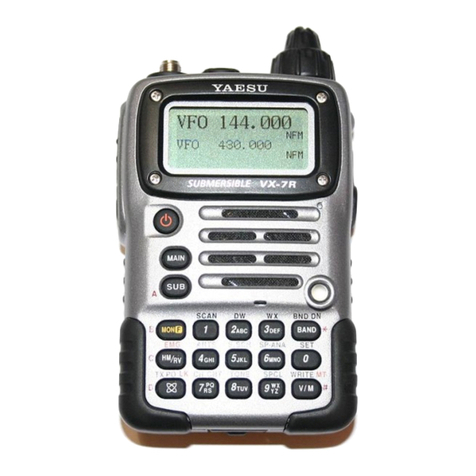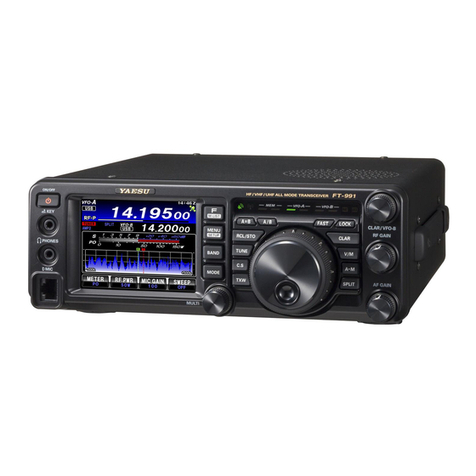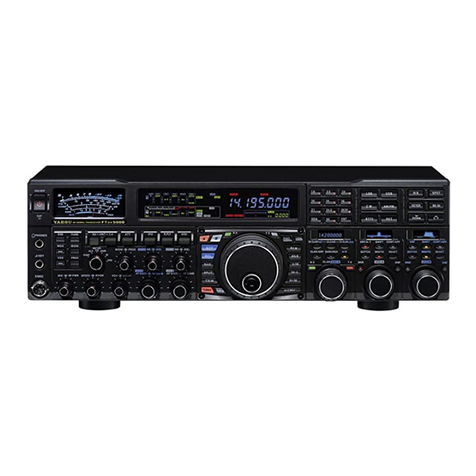
7
Circuit Description
The FT-897 internal assembly consists of the MAIN
Unit, PLL Unit, PA Unit, Panel Unit, BATT-CONN Unit,
REF Unit, MIC Unit, and the VR Unit.
Receive Signal Circuitry
RF Stages
Signals between 0.1 and 56 MHz received at the an-
tenna terminal pass through a low-pass filter, selected ac-
cording to the receiving frequency, then pass to another
low-pass filter, to remove unwanted out-of-band signals.
The filtered receiving signal passes, through one of the
following circuits, to the 1st Mixer Q1128 (SPM5001):
(1) an attenuator network (-10dB) which consists of resis-
tors R1101, R1108, R1109; (2) a “through” circuit en-
abled via diodes D1011 and D1012 (both DAP236U); or
(3) RF amplifier Q1025 (2SC5374).
Received 430 MHz signals, after passing through a
high-pass filter composed of L3052, L3059, C3209,
C3210, C3219, C3223, and C3319, are passed through
low-pass filter composed of L3042, L3045, C3165, C3168,
C3177, C3180, C3192, and C3196, and through a direc-
tional coupler, to the UHF T/R switch circuit composed
of diode switch D3015/D3021 (both UM9957F), D3022,
and D3066 (both HSU277). Then the signals are fed to
the 1st Mixer Q1128 via the RF-AMP, Q1026 (2SK2685.)
Received 145 MHz signals, after passing through a
high-pass filter composed of L3060, L3050, L3047,
C3200, C3203, C3220, and C3221, are passed through a
low-pass filter composed of L3043, L3044, C3167, C3169,
C3176, C3179, and C3191, and a directional coupler, to
the VHF T/R switch circuit, composed of diode switch
D3018/D3020 (both UM9957F). Then the signals are fed
to 1st Mixer Q1128 via the RF-AMP, Q1024
(BB304CDW).
Received 76-108 MHz signals, after passing through a
high-pass filter composed of L3060, L3050, L3047,
C3200, C3203, C3220, and C3221, are passed through
low-pass filter composed of L3043, L3044, C3167, C3169,
C3176, C3179, and C3191, and a directional coupler, to
the T/R switch circuit, composed of diode switch D3018/
D3020 (both UM9957F). Then it is fed to the Wide-FM
IF IC Q1058 (CXA1611N) on the MAIN Unit.
1st Mixer Circuit/1st IF Circuit
The 1st mixer on the MAIN Unit consists of quad MOS
FET Q1128 (SPN5001), where the receiving signal is
mixed with the 1st local signal (68.430-538.330 MHz)
from the PLL Unit. The resulting output signal (68.33
MHz) passes through monolithic crystal filter (MCF)
XF1001 (MF68Q, BW: ±6.0 kHz) to obtain the 1st IF
signal with a center frequency of 68.33 MHz. The IF sig-
nal passes through the 1st IF amplifier Q1073
(BB305CEW) to the 2nd Mixer, Q1083 and Q1084 (both
2SK302Y).
2nd Mixer Circuit/2nd IF Circuit
The 2nd Mixer consists of FETs Q1083 and Q1084
(both 2SK302Y) on the MAIN Unit, where the 1st IF
signal is mixed with the 2nd local signal (67.875 MHz).
The resulting output signal (455 kHz) is applied to the
2nd IF filter which is matched to the receiving mode: ei-
ther CF1004, CF1005 or an optional mechanical filter.
Noise Blanker Circuit
A portion of the 2nd IF signal is amplified by Noise
Blanker Amplifiers Q1075 and Q1079 (both
BB305CEW) on the MAIN Unit, and then rectified by
D1064 (1SS372). This output is applied to the Noise
Blanker Controllers, Q1093 (2SC4154E) and Q1099
(2SA1602A), which a yield Blanking signal according
to the timing of the incoming noise pulses. Then Blanking
signal controls the Noise Blanker Gate D1066 (BAS316),
to slice out the impulse noise from the signal.
AGC Circuit
The AGC circuit consists of D1061 (1SS372), tran-
sistor Q1090 (2SC4154E), and associated parts on the
MAIN Unit. Output from the AGC circuit is fed back to
the IF AGC circuit that controls the gain of the IF ampli-
fier FETs.
FM IF Circuit/FM Demodulator Circuit
On FM, the 2nd IF signal passes through the buffer
amplifier Q1094 (2SC4154E) and 2nd IF filters (CF1002
and CF1003) to the FM IF IC Q1080 (TA31135FN)
which contains a mixer, limiter amplifier, filter amplifier,
squelch trigger, and demodulator. The demodulated au-
dio signal at Q1080 passes through a low-pass filter (R1339
and C1282) and a de-emphasis circuit (R1303 and C1345),
then proceeds to the Audio Amplifier Circuit.
The squelch circuit selectively amplifies the noise com-
ponent of the demodulator output using the filter amplifi-
er inside the FM IF IC and an active band-pass filter con-
sisting of an externally attached resistor and capacitor.
Signal detection is performed by D1057 (DA221).
